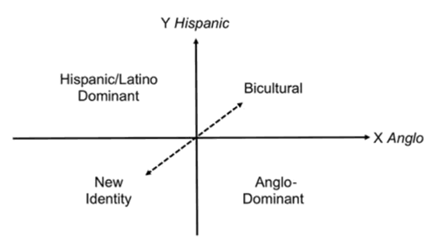Research and Segmentation Can Improve Your Campaign Strategy

National Hispanic Heritage Month is in full swing. This month-long celebration highlights the contributions and accomplishments of U.S. Hispanics and, for marketers, presents an opportunity to connect with this thriving demographic.
Brands have become increasingly aware that Hispanics are not a monolith. Factors such as country of origin, language, and acculturation weave a brilliant tapestry. One in which marketers and advertisers must learn to respect and navigate to transcreate their marketing messages successfully during the translation process.
To lend a hand, we’ve curated a checklist of best practices to help companies and brands develop a practical approach to targeting Hispanics and developing relevant messaging that leads to a well-informed campaign strategy.
Segment The Target Group Into Transition Subgroups
Why bother to segment Hispanic/Latinos into subgroups? After all, they will eventually assimilate American culture. Right? Wrong. When it comes to Hispanics, multiple roads lead to eventual assimilation.
According to Gallegos United (formerly Gallegos Agency), assimilation and integration/biculturalism are two possible paths towards acculturation. The second being the most popular[i]. To this notion, Dr. Felipe Korzenny adds:
“Many communities become heavily Hispanic and remaining Hispanic is increasingly easy and achievable. Still, most Hispanics understand very well that their economic and social future depends on being able to succeed in U.S. culture. Thus, being bicultural becomes a most attractive outcome. It follows, then, that marketers must adjust to the stages of transition and Hispanics’ new sense of bicultural identity rather than wait for Hispanics to assimilate into the larger “melting pot.” In waiting for Hispanics to “arrive” these marketers may get left behind.[ii]
— Dr. Felipe Korzenny

The upper-left quadrant represents Latinos who haven’t assimilated the host culture; instead, they stick to the values and norms of their country of origin. Generally, they don’t speak English, or they have minimal proficiency to help them in their daily lives.
The lower-right quadrant represents Latinos who assimilated the host culture and even replaced their country of origin’s cultural elements with the host culture. Portions of the newer generations of Hispanics are portrayed by this quadrant.
At this point, marketers might choose to focus on Spanish-only campaigns for the Hispanic-dominant group, and English-only campaigns (with some touches of Hispanic heritage) for the Anglo-dominant group.
However, the plot thickens when it comes to explaining the remaining quadrants. As it turns out, newer generations of Hispanics embody a “third-force” that ni es de aquà ni de allá (is neither from the U.S. nor from the country of origin). This force is characterized by strong biculturalism but cannot be explained as a blend of Hispanic- and Anglo-dominant quadrants.
The complexity of this model increases when we find that these individuals have created a new Hispanic identity out of necessity because they don’t feel well represented by brands, family, community, etc. Instead, they transition towards a “bicultural way of being” that allows them to straddle the Hispanic and Anglo-Saxon worlds successfully.
Due to this complexity, segmentation is essential to curating audience groups that will be more responsive to your messaging. Studies suggest that the way to cluster these swirling dynamics is by adding dimensions like shopping style, digital consumer behavior, life stage, and even lifestyle (e.g., pragmatic, progressive, virtuous).
Target the Top Performing Channels Per Group/Subgroup
H Code’s latest report on Hispanics’ digital consumption indicates that 64% use social media to connect with friends and family. The breakdown is as follows:
- Facebook 78%
- YouTube 71%
- Instagram 65%
- Snapchat 43%
- WhatsApp 41%
Not surprisingly, most of them access these platforms through smartphones (93%), and 75% will do so every day.
However, they are quite selective when it comes to social media ads. Seventy-eight percent don’t mind influencer promotions as long as they are sincere/authentic. Naturally, content reflecting Hispanic culture is more likely to be appealing.
Use Latinx in the Right Context
The term “Latinx” may be trending on social media and serve as the latest buzzword among multicultural marketers and academics, but it is far from receiving mass adoption. Data suggests that Hispanics do not prefer the use of the term when describing ethnicity. Casanova//McCann’s LinkedIn series titled “The Truth About Latinx” sheds light on this phenomenon:
The term Latinx emerged as a way to counter the gendered nature of the Spanish language, by removing the male ‘o’ or female ‘a’ and replacing it with a neutral x to be more inclusive. Marketing and academic outlets have been quick to adopt it, but our research showed that only 1% of Hispanics prefer to be described as Latinx. Mainstream adoption takes time and identity is constantly evolving. As marketers, we need to not only understand the complexities of identity but also be able to navigate them.[iii]
Similarly, a study released in 2019 by leading cultural insights agency, ThinkNow, revealed that only 2% of Hispanics prefer to identify as Latinx. Their follow-up study in July of this year doubled the base size yet drew the same conclusion.
But there are other views. As Conill’s Content Strategy VP, Laura Semple, stated, “the term is taking relevance by itself, and it’s becoming a way to tell the world that we are a more inclusive society.”
Whether or not you are an early adopter of the term, it is crucial to plan campaigns using the correct cultural lens so you can resonate meaningfully with the targeted audience’s identity. As for now, Latinx is mostly used in LGBTQ+ contexts. Those in favor of using the term see it as an inclusive alternative to “Latino/Latina.” It is slowing gaining traction.
Select Imagery Based on Data
During Race Talk’s recent podcast episode, Hispanic Marketing, Dr. Felipe Korzenny reconfirmed, “there’s no way to do marketing that isn’t cultural. Without addressing culture, you probably won’t be successful.”
But a fatal flaw among marketers is making assumptions and becoming biased by material culture, e.g., clothes, buildings, colors, and artifacts.
Marketers should strive to depict the elements of the subjective culture, such as worldviews, expectations, challenges, dreams, needs, etc.
In the H Code report, 80% of respondents feel most companies and brands treat them as stereotypes.
Experiment With Bilingual Layouts
The report goes on to say that 63% of Hispanics prefer searching for info online in English. At the same time, ads reflecting their culture are more likely to make an impression (72%), and they wish there were more campaigns specifically created for the Hispanic community (69%). Additionally, 66% say they take notice of bilingual ads as a reflection of the Hispanic experience.
The story in the data is one of transition. Traditional marketing tactics (e.g., Spanish-only) are being replaced by the digital consumption behaviors of Hispanics living in the U.S.
The rise of bilingualism is undeniable. The notion of 100% American and 100% Hispanic is gaining more traction. Researchers explain that Hispanics are creating a new identity that can’t be articulated through just one lens. Instead, country of origin and host culture are equally strong factors.
Logically, it behooves marketers to test bilingual pieces (English visually paired with Spanish) that portray the subjective experiences of new generations of Hispanics. Of course, one should have monolingual assets as a backup for smaller groups who are Spanish-dominant, such as first-generation Hispanics.
Partner with a Spanish Translation Company Specializing in Marketing
If you and your team decide that some or all of a campaign should be translated into Spanish to reach the desired audience, but you lack translation professionals in-house, it is crucial to delegate this task to a translation company specialized in transcreation.
The process goes beyond transferring a message from language A to language B. Transcreating your carefully crafted message requires talented linguists with expertise in the cultural nuances of the target audience and project/vendor management to meet tight deadlines.
Professionals use language technology to ensure that a campaign tells your story consistently and always in alignment with previous pieces already “live” digitally or in stores. They also assure that legal disclaimers (e.g., retail promotions) are consistent, clear, and 100% accurate, as stated in English.
Key Takeaways About Segmentation
Without a doubt, Hispanic identity is evolving across generations as immigrant connections fade and immigration declines. U.S. Census data from 2014 shows 65% of Hispanics are U.S. born compared with 60% in 2000. Young Hispanics rarely share their ancestors’ experiences of isolation, dictatorships, language barriers, discrimination, and socio-economic turmoil in their countries of origin. They are being raised in more stable, prosperous surroundings with greater access to influences that shape sentiment and determine purchase behavior. But cultural values season their purview, making it essential that marketers understand the complexities of this demographic, and that those insights be reflected in their campaign strategy.Â
Click to download your free Hispanic Marketing Checklist.
Content written in partnership with The Translation Team
[i] Exact reference isn’t available anymore since the company merged into Gallegos United. For a citation, check out the fifth chapter (Enculturation, acculturation, and assimilation) of the book Hispanic Marketing: The Power of the New Latino Consumer (2017).
[ii] Korzenny, F., Chapa, S. and Korzenny, B. A. (2017) Hispanic Marketing: The Power of the New Latino Consumer. Taylor & Francis.
[iii] PRODU.COM (2020) Estudio Casanova/McCann: MayorÃa de hispanos no se siente apoyada ni retratada por las marcas [Casanova/McCann Study: Most Hispanics Don’t Feel Supported nor Portrayed by Brands]. Available only in Spanish at: https://www.produ.com/noticias/estudio-casanova-mccann-mayoria-de-hispanos-no-se-siente-apoyada-ni-retratada-por-las-ma (Accessed: 8 September 2020).






